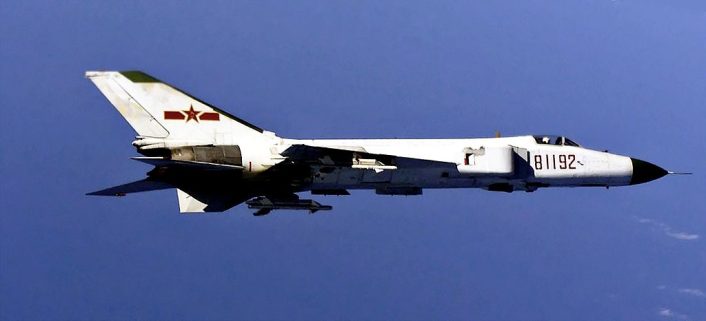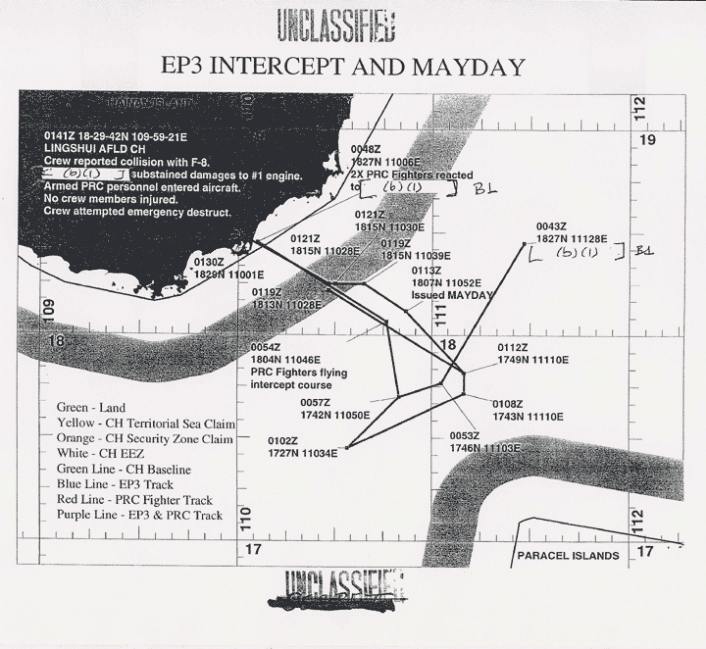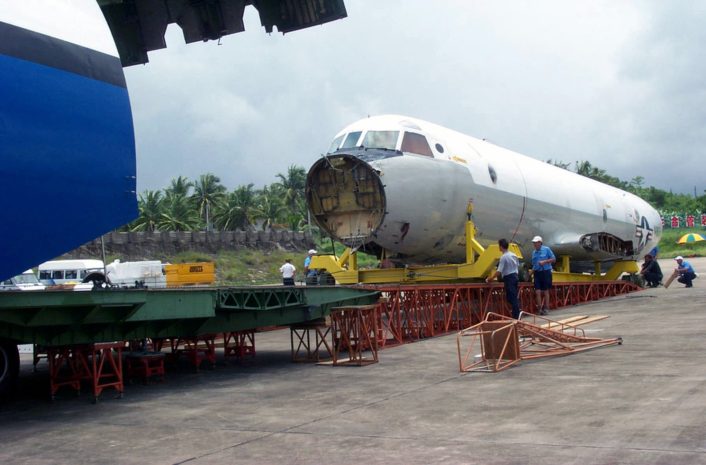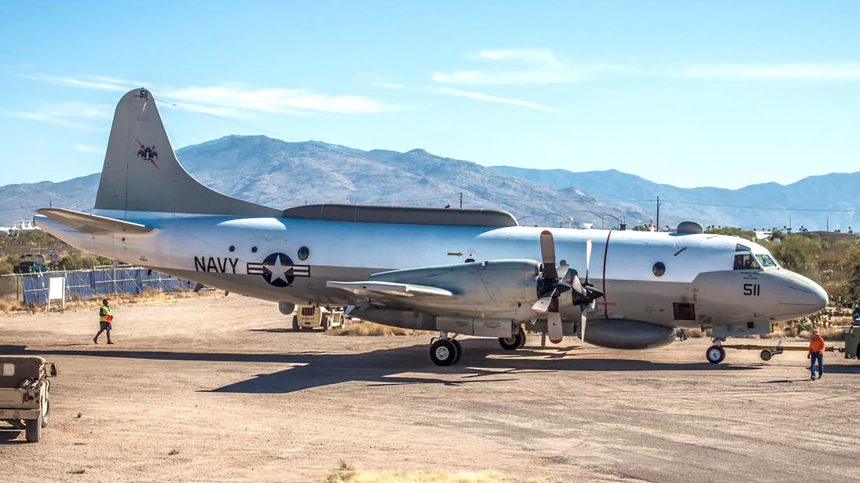The EP-3E, severely damaged, performed an unauthorized landing at Lingshui airfield triggering a diplomatic standoff between the U.S. and China.
Although the U.S. Navy has postponed the retirement of its last EP-3E Aries II aircraft, Fleet Air Reconnaissance Squadron (VQ) 1 “World Watchers”—the primary operator of this signals intelligence platform since its inception (with VQ-2 “Sandeman,” which was disbanded in 2012, being the other)—has already retired some of its oldest airframes. Among them is BuNo 156511, the EP-3E involved in a collision with a Chinese Navy J-8 fighter jet on April 1, 2001, in what became known as the “Hainan Incident.”
That very EP-3E will soon be on public display at the Pima Air and Space Museum, where it arrived on October 22, 2024. The aircraft was in fact towed from the nearby “Boneyard” at the 309th Aerospace Maintenance and Regeneration Group (AMARG) and will undergo restoration before joining the museum’s collection.
The 2001 Hainan Incident
On April 1, 2001, the EP-3E 156511 of VQ-1 launched from Kadena Air Base, in Okinawa, Japan, on a routine electronic intelligence (ELINT) mission. Using radio callsign PR32, the aircraft flew over the South China Sea collecting signals intelligence from international airspace.
As the EP-3E was 5 hours into its mission, flying at an altitude of 22,000 feet and at 180 knots, it was intercepted by two PLAN (People’s Liberation Army Navy) Shenyang J-8II fighter jets scrambled from Lingshui airfield on Hainan Island, China. One of the J-8s, piloted by Lt. Cmdr. Wang Wei, made several close passes at the EP-3; on the third pass, the two aircraft collided.
The force of the collision was catastrophic for the J-8, which broke into two pieces, while the EP-3 sustained severe damage. Wang Wei, the pilot of the Chinese J-8, was seen ejecting from his aircraft. His body was never recovered, and he was presumed dead, later hailed as a hero in China.

Its radome was torn off completely, and its left propeller was badly damaged. The Chinese fighter’s tail fin struck the EP-3’s left aileron, sending the U.S. plane into an uncontrollable dive. The aircraft plummeted 14,000 feet before the pilot, Lt. Shane Osborn (who later wrote a compelling book – that this Author read several years ago and highly recommend), managed to stabilize it. With the EP-3 severely compromised, Osborn made the critical decision to attempt an emergency landing at the nearest airfield: Lingshui.
In the 26 minutes following the collision, the EP-3 crew worked frantically to destroy classified materials aboard the aircraft, following the standard protocol to prevent sensitive information from falling into “enemy” hands. Improvisation played a key role in these efforts; in the absence of formal training for such a scenario, the crew used coffee and axes to destroy hard drives and other equipment. However, despite their efforts, not all of the classified data was successfully destroyed.
Osborn successfully brought the heavily damaged EP-3 down at Lingshui airfield, where it landed without flaps or trim and with only partial control of its systems. The plane landed at 170 knots with significant damage, including a disabled engine and a malfunctioning propeller.

Diplomatic Standoff
Upon landing, the 24 crew members of the EP-3 were detained by Chinese authorities and held for 10 days. During this period, the crew was interrogated repeatedly, though they were generally treated well. Despite the conditions, which included sleep deprivation and unfamiliar food, the crew maintained high spirits.
Negotiations for the crew’s release were tense, and a diplomatic resolution was eventually reached with the delivery of a formal communication known as the “Letter of the Two Sorries.” In this letter, U.S. Ambassador Joseph Prueher expressed “regret and sorrow” for the incident but stopped short of offering an official apology, a stance that was consistent with U.S. policy. This nuanced wording was acceptable to the Chinese government, which subsequently released the crew on April 11, 2001. The disassembled EP-3 was returned to the U.S. using an AN-124 on Jul. 3, 2001. The U.S. Pacific Command had begun operations to return the damaged surveillance plane June 13.

The incident strained U.S.-China relations and led to increased tensions in the region. Lt. Shane Osborn was awarded the Distinguished Flying Cross for his actions during the crisis, while J-8 pilot Wang Wei was posthumously honored as a national hero in China. The event, which occurred just 10 weeks after George W. Bush took office, marked his first major foreign policy challenge. The standoff raised concerns over U.S. surveillance operations in proximity to China, though these missions continued largely unchanged.
In the years following the incident, Chinese forces briefly reduced their aggressive intercepts of U.S. surveillance aircraft, but tensions persisted, particularly around Hainan Island, a strategic base for China’s submarine fleet.
Incidents involving U.S. and NATO assets and Chinese jets continue to occur every now and then in the region.









